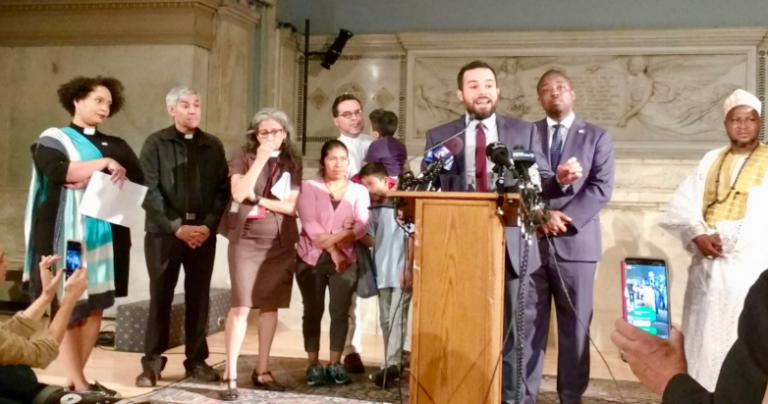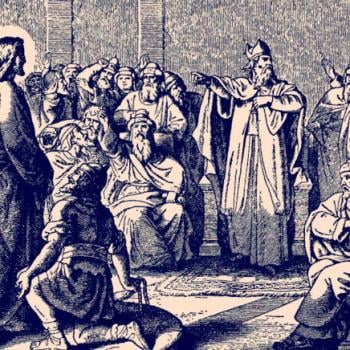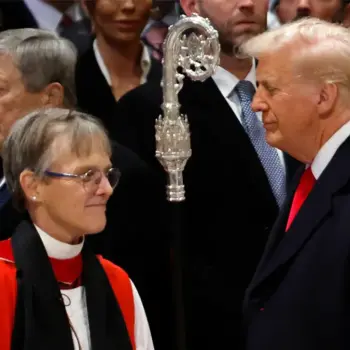Happy to share the first official post by our newest contributor, Melissa Borja!
Yesterday in New York City, the New Sanctuary Coalition, a faith-based immigrant rights organization, held a press conference with New York state senator Brian Benjamin and state assemblyman Harvey Epstein to introduce the “Separated Children Accountability Response (SCAR) Act.” New Sanctuary, government officials, and local religious leaders worked together to draft this bill in response to the revelation that, as of late June, New York City was host to approximately 300 migrant children who were forcibly separated from their families as a result of the Trump administration’s “zero tolerance” immigration policy. Because there has been little public information about these children and the process by which they will be reunited with their parents, the SCAR Act aims to use the regulatory power of state government to establish a “reporting system” that would give the public more details about the migrant children held in facilities that have federal contracts, such as Cayuga Center in Harlem.
The press conference introducing this bill was not held in Albany or at City Hall, but at Judson Memorial Church, in the presence of clergy from throughout New York City.

The decision to introduce this bill to the public in a religious space and among religious people was not an accident. New Sanctuary, an organization for which I am a volunteer, has deep roots in faith-based organizing. It frames immigration issues in terms of religious values, and it draws on the support of local religious leaders and congregations when pushing for policy change. Throughout its history, New Sanctuary has pursued a distinctive immigration advocacy strategy that focuses on direct engagement with government at the same time that it remains centered on religious commitments and communities. Sen. Benjamin himself, in his explanation of the SCAR Act, highlighted the religious values that animate his work on the bill. Calling the family separation crisis “a scar on our nation” that is “not moral,” he said that his commitment to drafting the legislation drew in part from a lesson he learned at his own church in Harlem—the call “to love beyond the limits of our prejudices.”
New Sanctuary as a “Multi-Target Social Movement”
Importantly, New Sanctuary leaders at the press conference did not simply discuss the SCAR Act and the need to win the support of government officials in Albany—they also talked about the need to win the support of faith communities. To this end, New Sanctuary leaders unveiled plans for a “weekend of faith” that would use liturgy and congregation-based activities to call attention to the bill and to educate people of faith about current immigration issues, particularly the border policies that have separated parents from their children. Scheduled to take place during the Feast of the Transfiguration, the event aims to transform people’s hearts and minds. As New Sanctuary organizer Jonathan Soto put it, faith leaders need to “lift up the moral argument” for the SCAR Act and for other reforms to the nation’s immigration system, and, citing Ecclesiastes, he declared that “Every human being is sacred–legislation should reflect that.”
The effort to transform both government and faith communities is a distinctive feature of New Sanctuary. In her book about progressive religion and immigration justice, One Family Under God, sociologist Grace Yukich describes New Sanctuary as a “multi-target social movement”:
During the first two years, the New Sanctuary Movement was not solely focused on changing immigration policy or even on keeping immigrant families together through halting raids, detentions, and deportations. The aims of New Sanctuary also included religious change, in particular the transformation of individual faith communities and of American religious culture. In other words, New Sanctuary did not merely have religious goals: it targeted religious institutions and religious culture as sites for change. (p. 53)
Yukich’s observations, while focused on the first two years of New Sanctuary, aptly describe New Sanctuary’s approach to immigration justice work today. More broadly, this multi-target approach is characteristic of the long tradition of faith-based activism on immigration and refugee issues in the U.S.
Converting Fellow Christians in Faith-Based Refugee Advocacy
A look to the past suggests that targeting both government and religious communities as “sites for change” can be very effective. For example, this strategy has been useful in building support for refugee resettlement, which has always been unpopular throughout U.S. history. Public opinion polls throughout the twentieth century illustrate the deep American opposition to refugees. In January 1939, 30 per cent said that the U.S. should resettle Jewish refugees; 61 per cent said it should not. In May 1975, 36 per cent of Americans said that the U.S. should resettle Vietnamese refugees; 54 per cent said it should not. Finally, in October 2016, 41 per cent of registered American voters said that the U.S. should accept Syrian refugees; 54 per cent said it should not. In all cases, a majority of Americans said that the U.S. should not accept refugees; only about one-third said it should.

If the American public has been consistent in its rejection of refugees, religious leaders have been consistent in their embrace of them. From World War II until the present day, religious leaders across the theological and political spectrum have advocated passionately for more just and generous refugee policies. The importance of multi-faith refugee advocacy was on clear display, for example, in 1979, as the world was struggling to respond to the refugee crisis in Southeast Asia. When President Jimmy Carter announced his plans to appropriate more funds to aid refugees in Thailand, he was flanked by religious leaders—a priest, a rabbi, a minister, and a representative of Church Women United—who had visited the White House to urge him to take action.
But religious leaders have not only strived to transform the hearts and minds of government leaders; they have also strived mightily to transform the hearts and minds of their own faith communities. The national offices of different Christian denominations have produced films, slide shows, radio spots, newspaper ads, flyers, and pamphlets to raise awareness of refugee issues. Churches dedicated special Sundays to refugee-focused activities, such as listening to a presentation by a refugee sponsorship coordinator, hearing lectures about refugees’ cultural traditions, showing filmstrips about the conditions in refugee camps, and collecting money to support aid organizations serving refugees at home or overseas.
In these efforts, religious leaders have strived to educate the public about the plight of forced migrants, but the outreach is not simply focused on the refugees—it is just as much about Christian Americans themselves and the spiritual transformation that they can experience when they choose to welcome refugees. Answer for Anne, a short film created by Lutheran World Action and the National Lutheran Council in 1949, exemplifies this strategy of telling stories about changing Christian hearts. In this film, a schoolgirl named Anne is assigned to write an essay about Displaced Persons and whether or not her community should accept them. She grows frustrated and upset as she grapples with the question, and as she rides her bicycle through town, she has an epiphany about “where to go for the answer”—her church. There, Anne encounters her minister, and together they watch a film about Displaced Persons that causes her to reconsider the issue and become more open to accepting refugees. After the film, her minister emphasizes the Christian responsibility to show generosity and selfless love to neighbors, and then he announces that their congregation is going to be the headquarters for resettlement efforts in their community.
“Well, I felt pretty upset when I came here,” says Anne. “Now, I think our town’ll come through, if we can convert a lot of people!”
“Convert is exactly the word!”, her minister replies.
The film closes with Anne saying a prayer at her desk, where a cross and a framed picture of the Statue of Liberty sit beside her typewriter. “Dear God,” she prays, “thank you for helping me to find the right answer. Give me the love to be unselfish and help me to be strong enough to love my neighbor as myself, as Jesus did.”
Anne is a fictional character, but the conversion that she experiences in the film is one that did in fact happen to many individuals and congregations across the country, not only during the resettlement of Displaced Persons, but of several other refugee groups as well. Religious organizations have done the lion’s share of refugee resettlement work in the U.S., and that has been possible in part because of the deliberate efforts to change the hearts and minds of people of faith. Indeed, these converts would turn out to be the powerful engine of grassroots resettlement efforts.
Changing Christian Hearts in the Trump Era
In current debates about immigration and refugee resettlement, religious leaders from nearly every denomination have opposed the restrictionist and exclusionist policies of the Trump administration. However, lay people have not followed their church leaders on this issue, as evidenced by public opinion polls. A Pew poll in May found that 68 per cent of white evangelical Protestants do not believe that the U.S. has an obligation to accept refugees; only 25 per cent believe that it does. As this and other polls suggest, transforming religious communities remains an important and necessary task for New Sanctuary and other faith-based immigrant justice groups.
Ultimately, the many Christians who are outraged by the plight of separated migrant families need to continue to press the Trump administration to change its policies, and they also need to urge state and local governments to use their powers to hold public and private institutions involved in the current crisis accountable. Government is not the only target, though. Christians also need to work for transformation and conversion in their own faith communities. Government policies need to change, yes, but so, too, do Christian hearts and minds.













